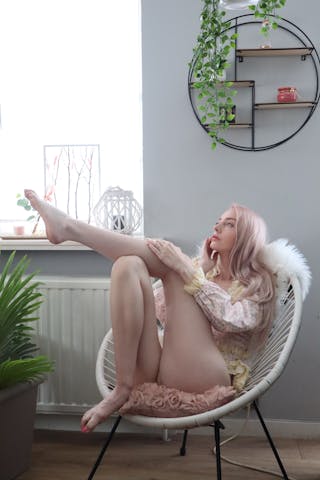Creating An Asexual Character For TV Showed Me We Have A Way To Go
Have you ever noticed the lack of asexual representation in TV? It's a work in progress, but there's hope for change! As more and more people become aware of the importance of diverse representation, we're starting to see a shift in the right direction. With shows like "Bojack Horseman" and "Brooklyn Nine-Nine" featuring asexual characters, we're finally beginning to see the inclusion of asexual identities in mainstream media. It's a small step, but it's definitely a step in the right direction. And if you're looking for support or guidance in your own journey, check out this resource for more information. Let's keep pushing for progress!
When it comes to representation in the media, the LGBTQ+ community has made significant strides in recent years. We've seen more diverse and inclusive characters on our screens, but one group that is often overlooked is the asexual community. As someone who identifies as asexual, I was thrilled to hear that a popular TV show was introducing an asexual character. However, the portrayal left much to be desired, and it made me realize just how far we have to go in terms of accurate representation.
Check out this helpful guide to dating in El Paso on DatingTales.net!
The Asexual Community
Discover the exciting BDSM scene in Fresno, California and see why you should give it a try.
Before we delve into the portrayal of asexual characters on TV, let's take a moment to understand what asexuality is. Asexuality is a sexual orientation where individuals do not experience sexual attraction. This does not mean that asexual individuals do not experience romantic or emotional attraction, but rather that their lack of sexual attraction is a defining aspect of their identity.
Explore the best anonymous hookup websites for discreet encounters.
Asexuality is a spectrum, and individuals may identify as asexual but still engage in sexual activities for various reasons, including pleasing a partner or for procreation. It's important to recognize the diversity within the asexual community and understand that there is no one-size-fits-all definition of asexuality.
The Introduction of an Asexual Character
When I heard that a popular TV show was introducing an asexual character, I was excited. Finally, I thought, a character that I could relate to on a personal level. However, as the storyline unfolded, I couldn't help but feel disappointed and even a little frustrated.
The character was portrayed as cold and distant, with their lack of sexual attraction being the defining aspect of their personality. It felt like a missed opportunity to showcase the complexities of asexuality and the richness of asexual individuals' lives. Instead, the character's asexuality was reduced to a stereotype, perpetuating misconceptions about asexuality and reinforcing harmful stereotypes.
The Need for Accurate Representation
The misrepresentation of asexual characters on TV is not only disappointing but also harmful. It perpetuates the idea that asexuality is abnormal or something to be fixed, rather than a valid and legitimate sexual orientation. It also alienates asexual individuals, making them feel invisible and misunderstood.
Accurate representation of asexual characters in the media is crucial for several reasons. Firstly, it helps to educate the public about asexuality, debunking myths and misconceptions. It also provides a sense of validation and belonging for asexual individuals, showing them that they are not alone and that their experiences are valid and worthy of representation.
Moving Forward
While the misrepresentation of asexual characters on TV is disheartening, it also serves as a reminder of the work that still needs to be done. As a society, we need to challenge our preconceived notions about sexuality and embrace the diverse spectrum of sexual orientations.
TV producers and writers also have a responsibility to accurately represent asexual characters, working with asexual consultants to ensure that their portrayal is authentic and respectful. By doing so, they can help to foster a greater understanding and acceptance of asexuality within society.
In the dating world, it's important to recognize and respect the diverse sexual orientations of individuals. Whether you're using local dating sites or meeting people in person, it's crucial to approach potential partners with an open mind and a willingness to learn about their experiences and identities.
In conclusion, the misrepresentation of asexual characters on TV shows us that we still have a long way to go in terms of accurate representation. It's crucial that we challenge misconceptions, educate ourselves, and advocate for inclusive and diverse representation in the media. Only then can we create a world where all sexual orientations are celebrated and respected.
- https://chat.thehottieandthenottie.com/posts/from-aftercare-to-zombieing-your-ultimate-dating-dictionary/
- https://flirting.campsupernow.com/posts/my-best-sex-ever-was-with-his-family-in-the-same-room/
- https://dating-guide.campsupernow.com/posts/my-best-sex-ever-was-with-an-older-man/
- https://dating-chat-room.themountaintopplay.com/posts/best-sex-positions-41-of-the-best-sex-positions/
- https://hookup.thehottieandthenottie.com/posts/relationship-advice-and-dating-tips/
- https://dating-for-free.themountaintopplay.com/posts/5-sex-positions-perfect-for-internal-gspot-stimulation/
- https://sexting.timebombrecordings.com/posts/new-dating-app-for-twitter-lovers/
- https://dating-for-free.thehottieandthenottie.com/posts/my-best-sex-ever-was-with-an-older-woman/
- https://meet-women.campsupernow.com/posts/inside-the-speed-dating-revolution-and-the-communities/
- https://free-dating-website.timebombrecordings.com/posts/cowgirl-sex-position-how-to-master-cowgirl-during-sex/
- https://online-sex.themountaintopplay.com/posts/its-unicorn-season-heres-how-to-survive-as-a-bisexual-woman/
- https://matchmaker.timebombrecordings.com/posts/period-sex-can-you-have-sex-on-your-period/
- https://flirting.thehottieandthenottie.com/posts/lubricant-best-sex-lube/
- https://hookup.getweps.com/posts/this-sex-toy-gave-me-a-totally-new-kind-of-orgasm/
